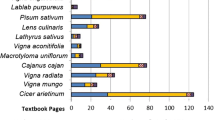Abstract
Early remains of Helianthus annuus L. unearthed at the San Andrés site in the Gulf Coast region of Tabasco, Mexico, constitute the earliest record of domesticated sunflower. Accelerator mass spectrometry (AMS) age determinations of a large domesticated seed and achene produced dates of 4130 ± 40 years before the present (B.P.) and 4085 ± 50 B.P., respectively. These discoveries challenge the longstanding hypothesis that sunflower was domesticated in eastern North America. Moreover, when considered with other recent discoveries on plant domestication, these data suggest a reconsideration of the idea that the eastern United States was an independent hearth for domestication.
Resumen
Los registros más antiguos del girasol lo constituyen los primeror restos deHelianthus annuus L. desenter-rados en el sitio de San Andrés, Tabasco, en la costa del Golfo de México. Mediante el acelerador de espectrometría de masas se determinó la edad de una semilla grande domesticada y un aquenio se obtuvieron dos fechas de 4130 ± 40 años antes del presente (A.P.) y 4085 ± 50 A.P., respectivamente. Estos descubrimientos ponen en duda la hipótesis de hace tiempo que dice que el girasol fue domesticado en el este de None América. También, cuando se tomaron en cuenta otros descubrimientos sobre domesticatión de plantas, estos datos suguieren una reconsideratión de la idea que el este de los Estados Unidos fue un centro independiente de domesticatión.
Similar content being viewed by others
Literature cited
Arias, D. M., and L. H. Rieseberg. 1995. Genetic relationships among domesticated and wild sunflowers (Helianthus annuus, Asteraceae). Economic Botany 49:239–248.
Ash, D. L., and N. B. Ash. 1985. Prehistoric plant cultivation in west-central Illinois. Pages 149–203in R. I. Ford, ed., Prehistoric food production in North America. Museum of Anthropology, Anthropological Paper No. 75. University of Michigan, Ann Arbor.
Brewer, A. J. 1973. Analysis of floral remains from the Higgs site (40L045). Pages 141–144in M. C. R. McCullough and C. J. Faulknor, eds., Excavation of the Higgs and Doughty Site. 1-75 Salvage Archaeology. Tennessee Archaeological Society, Miscellaneous Papers No. 12, Knoxville.
Callen, E. O. 1969. Diet as revealed by coprolites. Pages 235–243in D. Brothwell and E. Higgs, eds., Science in archaeology, 2nd ed. Praeger, New York.
Cowan, C. W. 1978. The prehistoric use and distribution of maygrass in eastern North America: cultural and phytogeographical implications. Pages 263–288in R. I. Ford, ed., The nature and status of ethnobotany. Museum of Anthropology, Anthropological Paper No. 67, University of Michigan, Ann Arbor.
Crites, G. D. 1993. Domesticated sunflower in fifth millenium B.P. temporal context: New evidence from Middle Tennessee. American Antiquity 58 (1):146–148.
Cronn, R., M. Brothers, K. Klier, P. K. Bretting, and J. F. Wendel. 1997. Allozyme variation in domesticated annual sunflower and its wild relatives. Theoretical and Applied Genetics 95(4):532- 545.
Doebley, J. 1990. Molecular evidence and the evolution of maize. Economic Botany 44(3 Supplement): 6–27.
Fritz, G. 1997. A three-thousand-year-old cache of crop seeds from Marble Bluff, Arkansas. Pages 42–62in K. J. Gremillion, ed., People, plants, and landscapes: studies in paleoethnobotany. University of Alabama Press, Tuscaloosa.
Heiser, C. B. 1951. The sunflower among the North American Indians. Proceedings of the American Philosophical Society 95(4):432–448.
—. 1954. Variation and subspeciation in the common sunflowerHelianthus annuus. American Midland Naturalist 51:287–305.
—. 1985. Some botanical considerations of the early domesticated plants north of Mexico. Pages 149–203in R. I. Ford, ed., Prehistoric food production in North America. Museum of Anthropology, Anthropological Paper No. 75, University of Michigan, Ann Arbor.
—. 1998. The domesticated sunflower in old Mexico? Genetic Resources and Crop Evolution 45:447–449.
Hernández, F. 1942. Historia de las plantas de Nueva Espana 1. Imprenta Universitaria, Mexico.
Lev-Yadun, S., A. Gopher, and S. Abbo. 2000. The cradle of agriculture. Science 288:1602–1603.
Miksicek, C. H. 1986. Paleobotanical identifications, Appendix 2. Pages 199–200in A. A. Demarest, ed., The archaeology of Santa Leticia and the rise of Maya civilization. Middle American Research Institute, Tulane University, New Orleans.
National Sunflower Association. Sunflower seed pro-duction[online]. Available: http//www.sunflowersnsa. com/producers/mark-stats/world-snd.html (1999, August 13).
Ramirez Celestino, C. 1991. Plantas de la regíon Ná-huatl del centro de Guerrero. Centro de Investiga-ciones y Estudias Superiores en Antropología Social, México.
Rieseberg, L. H., and G. J. Seiler. 1990. Molecular evidence and the origin and development of the domesticated sunflower (Helianthus annuus, Aster-aceae). Economic Botany 44(3 Supplement):79–91.
Rogers, C. E., T. T. Thompson, and G. J. Seiler. 1982. Sunflower Species of the United States. National Sunflower Association, Bismarck, ND.
Rust, W. F., and R. J. Sharer. 1988. Olmec settlement data from La Venta, Tabasco, Mexico. Science 242:102–104.
Smith, B. D. 1992a. Rivers of change. Smithsonian Institution Press, Washington, DC.
—. 1992b. Prehistoric plant husbandry in eastern North America. Pages 101–119in C. W. Cowan and P. J. Watson, eds., The origins of agriculture: an international perspective. Smithsonian Institution Press, Washington, DC.
—. 1997. The initial domestication ofCucurbita pepo in the Americas 10,000 years ago. Science 276:932.
—. 1998. Emergence of agriculture. W. H. Freeman, San Francisco, CA.
Turner, B. L. n.d. The comps of Mexico: a systematic account of the family Asteraceae, Heliantheae. Phytologia Memoirs Nos. 10–11, Huntsville, TX.
Wilson, H. D. 1990.Quinua and relatives (Chenopo-dium sect.Chenopodium subsect.cellulata). Econ-onic Botany 44(3 Supplement):92–110.
Yarnell, R. 1978. Domestication of sunflower and sumpweed in eastern North America. Pages 289–299in R. I. Ford, ed., The nature and status of ethnobotany. Museum of Anthropology, Anthropological Papers No. 67, University of Michigan, Ann Arbor.
Zohary, D. 1996. The founder crops of southwest Asian agriculture. Pages 142–158in D. R. Harris, ed., The origins and spread of agriculture and pas-toralism in Eurasia. Smithsonian Institution Press, Washington, DC.
Author information
Authors and Affiliations
Rights and permissions
About this article
Cite this article
Lentz, D.L., Pohl, M.E.D., Pope, K.O. et al. Prehistoric sunflower (Helianthus Annuus L.) domestication in Mexico. Econ Bot 55, 370–376 (2001). https://doi.org/10.1007/BF02866560
Received:
Accepted:
Issue Date:
DOI: https://doi.org/10.1007/BF02866560




